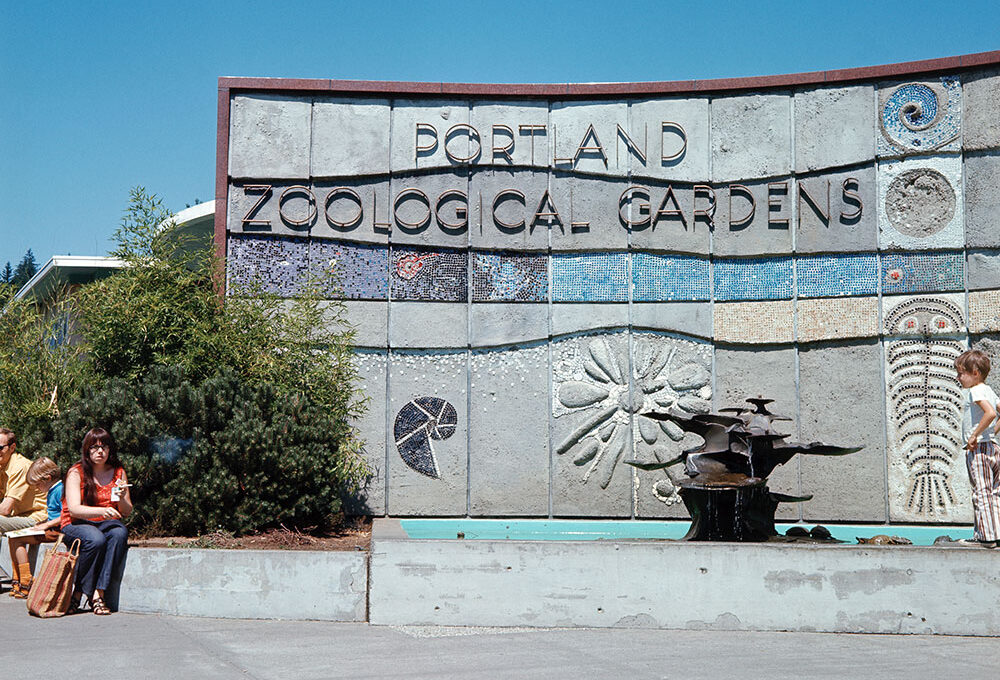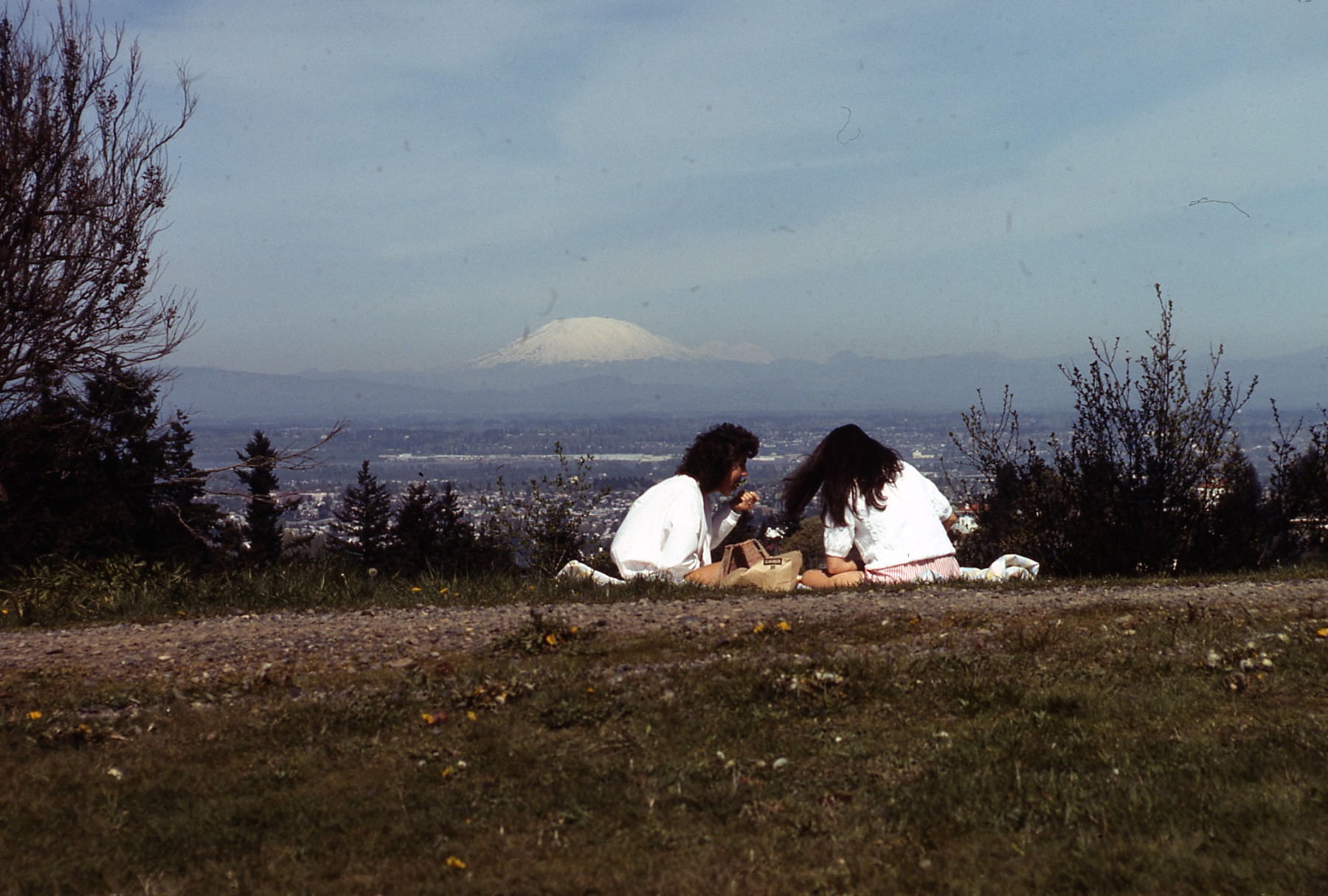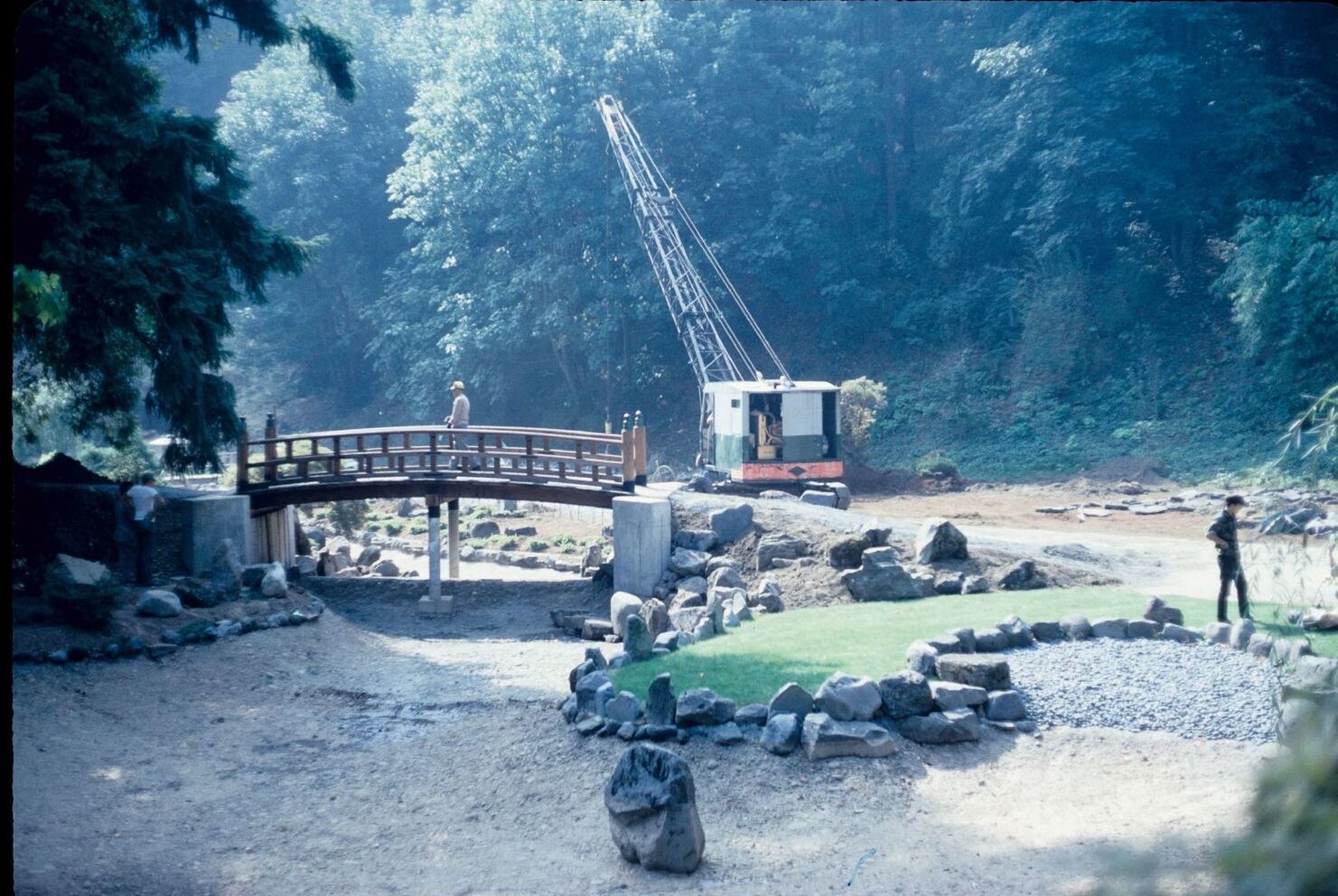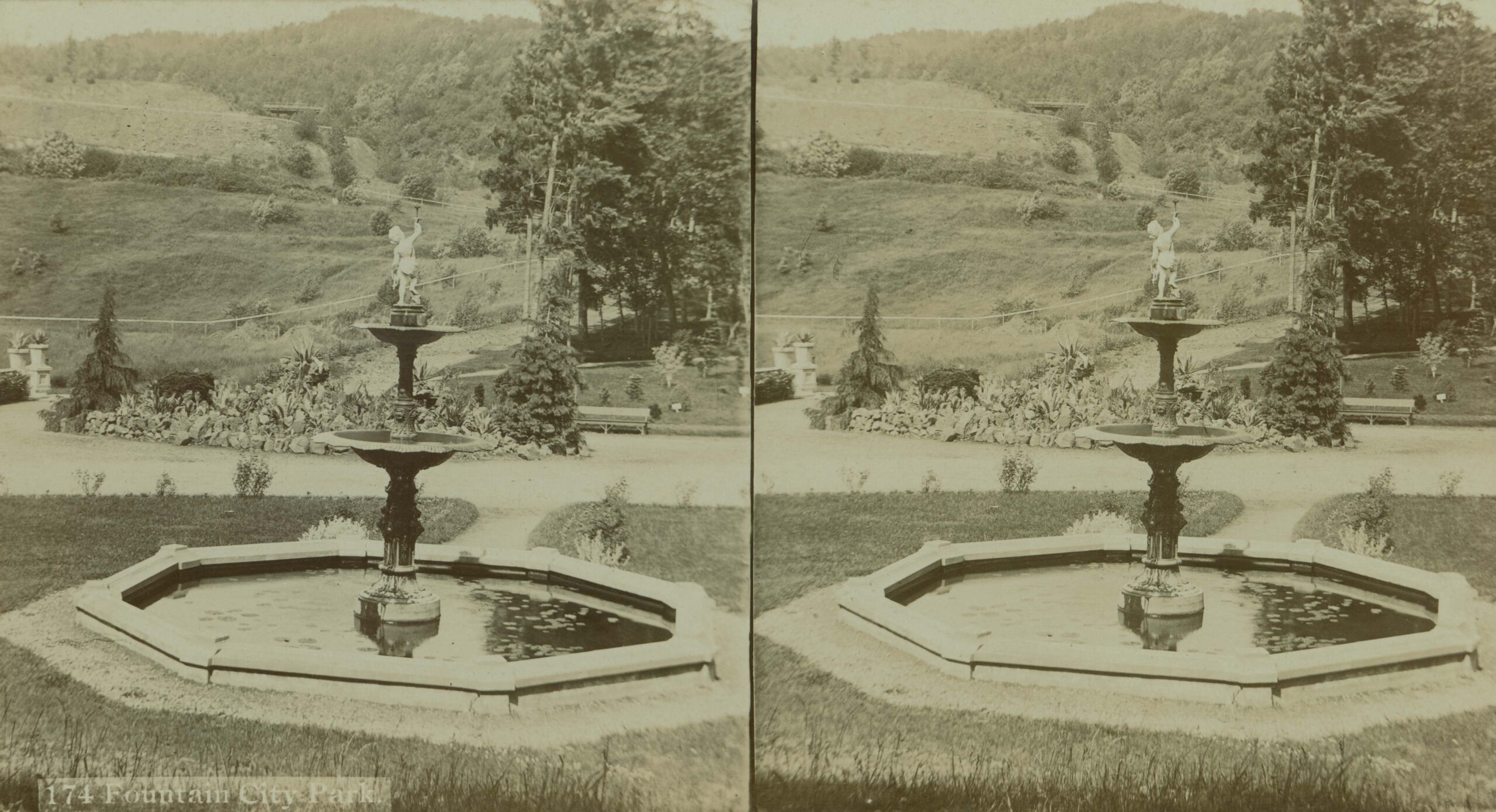Historic Stearns Canyon
Original Entrance & Park Name
Established in the 1800s, Washington Park is one of Portland’s oldest parks. The Park’s name, size, and entrances are among its many attributes that have evolved over the years.

The City bought the Park’s original 40 acres in 1871 from Amos King – a notable Portland developer – for $32,634. That’s the equivalent of about $642,476 today. It was a questionably high sum at the time given the area was heavily forested, hilly, and infested with cougars. Despite its relative distance from the central city of the time, City officials went on to designate the land as “City Park.”
“This original entrance, in the northeastern corner of the Park, is now known as Stearns Canyon…”
In 1912, the City changed the name from City Park to Washington Park to represent its main street entrance off of SW Washington Street, which is currently West Burnside Street. This original entrance, in the northeastern corner of the Park, is now known as Stearns Canyon and is used by pedestrians and bicyclists. It’s also home to the Loyal B. Stearns Memorial Fountain, which was placed in 1941 in honor of Loyal B. Stearns, a former Oregon judge.
Today, Washington Park covers some 410 acres and includes several cultural organizations, monuments, and other points-of-interest. Visitors will also find more than 15 miles of trails, some of which are part of the 40-Mile Loop connecting Washington Park with Pittock Mansion, Forest Park to the north, and Council Crest to the south.
Learn more about the history of Washington Park at History of Washington Park.
Discovery Points

Oregon Zoo
Home to nearly 2,000 animals representing more than 200 species from around the world. From education programs to on-the-ground conservation efforts, the zoo is working to save species regionally and worldwide.

Washington Park MAX Station
In 1998, TriMet built the Washington Park MAX Station, which is the deepest transit station in North America at 260 feet below ground. It’s also the only underground station in the entire MAX system.

Hoyt Arboretum
Founded in 1928 to conserve endangered species and educate the community, Hoyt Arboretum encompasses 190 ridge-top acres and 12 miles of hiking and biking trails just minutes from downtown Portland.

Portland Japanese Garden
The Japanese garden was created in Portland nearly 60 years ago and has become a hallmark of the community today.

World Forestry Center
We think of forests as ancient and unchanging, but in the inland West the forests we see today look nothing like those of 150 years ago.

International Rose Test Garden
The International Rose Test Garden was founded in 1917 and is the oldest continuously operated public rose test garden in the United States.

Historic Stearns Canyon
Established in the 1800s, Washington Park is one of Portland’s oldest parks. The Park’s name, size, and entrances are among its many attributes that have evolved over the years.

Chiming Fountain
One of Portland’s original pieces of public art is still on display today in Washington Park. The Chiming Fountain is located in what is considered to be Washington Park’s main circle.

Vista Points
Washington Park, originally called City Park, has been well-loved by its caretakers past and present. The stewards of the Park and how they approach and influence its care have evolved.

Dawn Redwood
Hoyt Arboretum has a collection of coast redwoods that are over 150’ tall and were the first trees planted in the arboretum in 1931.

Explore & Connect
Explore over 150 years of Washington Park, originally called City Park, and its many destinations by virtually visiting the featured Discovery Points. Each Discovery Point connects you to history, photos, and community members’ stories.
